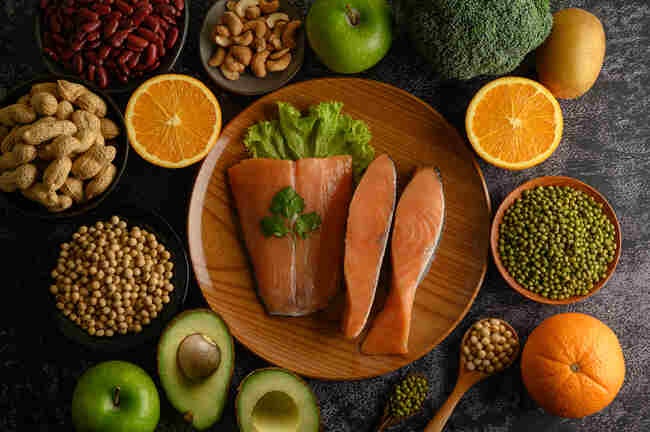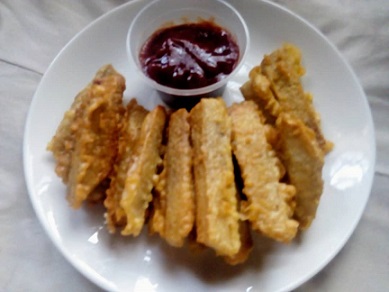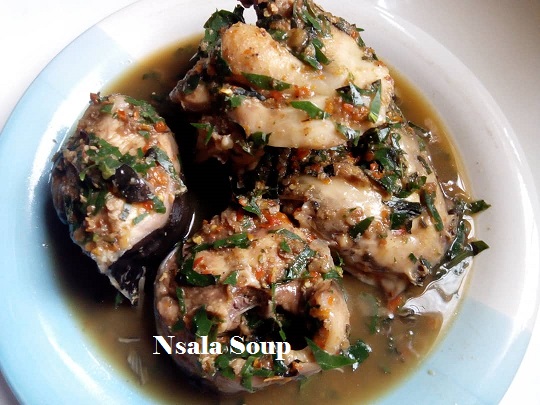
Top 20 High Calorie Foods – Foods with the Highest Calorie Content
Calories are a measure of the energy that food provides to the body. The amount of calories a person needs depends on various factors, such as age, gender, activity level, and health goals. However, the average adult needs about 2,000 -2,500 calories per day to maintain energy balance.
Some foods are higher in calories than others, meaning they provide more energy per serving. These foods are often rich in fat, sugar, or starch, which are the main sources of calories in the diet.
Eating too many high-calorie foods can lead to weight gain, obesity, and other health problems, such as diabetes, heart disease, and cancer. Therefore, it is important to limit the intake of these foods and balance them with lower-calorie foods, such as fruits, vegetables, lean protein, and whole grains.
What is Calories?
Calories are an energy unit derived from food and drink consumed. Basically, calories are a fundamental unit of measurement used in human nutrition to express the energy content of meals and the energy used in physical activity.
Knowing how many calories you consume can help you manage your weight and maintain a balanced diet since too many calories can make you gain weight while not enough calories can make you lose weight. As a result, monitoring calorie intake and expenditure is a standard procedure in many diet and exercise plans designed to meet certain objectives for wellness and health.
What Are Unhealthy High-Calorie Foods?
It’s important to distinguish between healthy and unhealthy high-calorie foods when looking for high-calorie foods.
Some unhealthy high-calorie foods are listed below:
- Processed foods, such as processed meats, salami, bacon, and other
- Fried foods, such as french fries, chicken nuggets, and chicken wings
- Fast foods, such as pizza, burgers, and fries
- Packed foods, such as cakes, soft drinks, ice cream, biscuits, chocolates, or chips
Health Benefits of High Calorie Foods
The key to eating high-calorie foods is moderation. You can enjoy them occasionally, but not every day.
However, not all high-calorie foods are bad for you. Some of them have nutritional benefits, These foods can help you meet your daily needs for certain nutrients, such as
- Vitamins
- Minerals
- Antioxidants
- Healthy fats
- Support your immune system
- Protect your cells from damage
- They can also help you feel full and satisfied, which can prevent overeating and cravings.
High Calorie Foods – What They Are and How to Eat Them
Healthy high-calorie foods are nuts, seeds, avocados, olive oil, cheese, eggs, salmon, and dark chocolate are what you should also pay attention to the portion size, as a small amount can provide a lot of calories. For example, a handful of nuts (about 28 grams) has about 160 calories, while a tablespoon of olive oil has about 120 calories.
You can use measuring tools, such as cups, spoons, or scales, to control how much you eat. You can also use visual cues, such as comparing the size of your food to common objects, such as a deck of cards, a tennis ball, or a dice.
Another tip is to pair high-calorie foods with low-calorie foods, such as salads, soups, or steamed vegetables. This way, you can fill up on fiber and water, which can help you eat less of the high-calorie foods. You can also add flavor and texture to your dishes with herbs, spices, lemon juice, vinegar, or salsa, which are low in calories but high in taste.
List of Top 20 High Calorie Food Items for Weight Gain
This foods have a lot of calories in them
- Avocados
- Chickpeas
- Rice
- Seeds
- Cheese
- Dark Chocolate
- Whole Grain Bread
- Potatoes and Starches
- Salmon and Oily Fish
- Peanut Butter
- Milk
- Nuts and dry fruits
- Full-fat Dairy Products
- Fats and oils
- Pasta And Wheat Products
- Whole Grains (Brown Rice)
- Sweet Potatoes
- Full-Fat Cottage Cheese
Calorie Kings and Queens – High Calorie Foods
Nuts and Nut Butters – High Calorie Foods
Nature’s powerhouses of protein, healthy fats, and fiber, nuts like almonds, pecans, and peanuts are calorie champions. A single ounce of almonds delivers around 160 calories, while a tablespoon of peanut butter boasts a whopping 95 calories. Nut butters spread on fruits, crackers, or incorporated into smoothies offer a delicious and convenient way to boost your calorie intake.
Avocados – High Calorie Foods
This creamy green fruit is a superstar in the calorie world. One avocado contains approximately 322 calories, along with a wealth of heart-healthy fats, fiber, and vitamins. Enjoy avocado slices on toast, in salads, or mashed as guacamole for a satisfying and calorie-rich addition to your meals.
Fatty Fish – High Calorie Foods
Salmon, tuna, mackerel, and sardines are not only rich in omega-3 fatty acids but also pack a calorie punch. A 3-ounce serving of grilled salmon can provide around 200 calories, making it a protein- and calorie-dense option for healthy meals.
Dried Fruits – High Calorie Foods
Nature’s candy, dried fruits like raisins, dates, and figs, are concentrated sources of sugar and calories. A half-cup serving of raisins delivers around 210 calories, while a single Medjool date packs about 277 calories. Enjoy dried fruits in moderation as a healthy snack or incorporate them into trail mixes or homemade energy bars.
Oils and Fats – High Calorie Foods
Olive oil, coconut oil, and butter are calorie-dense and add richness to various dishes. However, due to their high-fat content, it’s essential to consume them in moderation. A tablespoon of olive oil clocks in at around 120 calories, while a tablespoon of butter provides around 100 calories.
High-calorie fruits – High Calorie Foods
Fruits high in calories contain more fructose (fruit sugar) and less water. Citrus fruits, for instance, are low in calories because they are high in water content.
- Banana
- Avocado
- Plum
- Apricots
- Dates
- Mango
Fueling Your Body With High Calorie Foods
Ultimately, the best approach to food is one that prioritizes both quantity and quality. By incorporating a variety of calorie-dense and nutrient-rich options into your diet, you can provide your body with the energy it needs to thrive. Remember, mindful eating, portion control, and a balanced lifestyle are key to maintaining a healthy relationship with food and your body.
Reasons Why a person might require foods high in calories
If someone is trying to gain weight, they might want to include more foods that are high in calories.
Some may need to gain weight while recovering from an illness, have a medical condition, or desire a larger frame.
The following illnesses have the potential to cause severe weight loss:
- Diabetes Type 1
- Hyperthyroidism
- Cancer
- Celiac Disease
- Depression, Anxiety, or Stress
- HIV or AIDS person
Advice on How to Gain Weight
Engage in Anaerobic Muscle Building Exercises
As your body develops muscle, these exercises can raise your appetite and weight. This is particularly valid when paired with foods high in protein, such as fish, beans, peanut butter, or nuts.
Improve existing dishes with healthy fats and oils
Drizzle as many foods as you can with olive, peanut, or safflower oil. For instance, pasta, rice, other grains, salads, etc.
Boost portion sizes by preparing larger portions of high-calorie foods such as pasta, rice, and mashed potatoes.
Add high-calorie foods to existing dishes
Salads, rice dishes, pasta dishes, and other dishes taste great with the addition of nuts, seeds, and dried fruit.
Calories Drink
Consuming calories while on the go is made simple with drinks. Sip on juice, milk, soy milk, smoothies, and other calorie-dense, healthful beverages.
What are the top 10 foods to gain weight
Rice, milk, eggs, protein smoothies, red meats, salmon, whole-grain bread, dried fruit, nuts, and healthy starches like quinoa are among the top 10 foods that cause weight gain.
What are the highest calorie foods in the world?
Some of the highest calorie foods in the world are
– Macadamia nuts: These nuts have about 718 calories per 100 grams, making them the most calorie-dense nut in the world. They are also high in monounsaturated fat, which can lower cholesterol and improve heart health.
– Butter: This dairy product has about 717 calories per 100 grams, mostly from saturated fat. Butter can add flavor and richness to many dishes, but it can also raise the risk of cardiovascular disease and obesity. Therefore, it should be used sparingly and replaced with healthier alternatives, such as olive oil, avocado, or yogurt.
– Lard: This animal fat has about 902 calories per 100 grams, also mostly from saturated fat. Lard is commonly used for frying, baking, and making pastries, but it can also have negative effects on health, similar to butter. A better option is to use vegetable oils, such as canola, sunflower, or corn, which are lower in saturated fat and higher in unsaturated fat.
– Chocolate: This sweet treat has about 546 calories per 100 grams, mainly from sugar and fat. Chocolate can have some health benefits, such as improving mood, blood pressure, and brain function, especially if it is dark and has a high cocoa content. However, it should be consumed in moderation, as too much can lead to weight gain, tooth decay, and diabetes.
What are the lowest calorie foods in the world?
Celery
This vegetable has only 16 calories per 100 grams, making it one of the lowest calorie foods in the world. It is also high in water and fiber, which can help you stay hydrated and full. Celery can be eaten raw, cooked, or juiced, and can be added to salads, soups, or snacks.
Cucumber
This vegetable has only 15 calories per 100 grams, also making it one of the lowest calorie foods in the world. It is also high in water and vitamin C, which can support skin health and immunity. Cucumber can be eaten raw, pickled, or sliced, and can be used to make salads, sandwiches, or dips.
Watermelon
This fruit has only 30 calories per 100 grams, making it one of the lowest calorie fruits in the world. It is also high in water and lycopene, which can help prevent dehydration and protect against oxidative stress. Watermelon can be eaten fresh, frozen, or blended, and can be used to make smoothies, salads, or desserts.
Strawberries
This fruit has only 32 calories per 100 grams, making it one of the lowest calorie fruits in the world. It is also high in vitamin C, antioxidants, and polyphenols, which can boost immunity, fight inflammation, and lower cholesterol. Strawberries can be eaten fresh, dried, or cooked, and can be used to make jams, pies, or sauces.
How many calories should I eat per day?
The number of calories you should eat per day depends on your age, gender, activity level, and health goals.
However, the average adult needs about 2,000 calories per day to maintain their weight.
To lose weight, you need to create a calorie deficit, which means you need to burn more calories than you consume.
To gain weight, you need to create a calorie surplus, which means you need to consume more calories than you burn.
A general rule of thumb is to aim for a 500-calorie difference per day, which can result in a 0.5 kg weight change per week. However, this may vary depending on your individual metabolism, body composition, and lifestyle. Therefore, it is best to consult a doctor or a nutritionist before starting any diet plan.
How can I burn more calories?
The best way to burn more calories is to increase your physical activity. Exercise can help you burn calories, build muscle, improve your cardiovascular health, and enhance your mood. There are many types of exercise you can choose from, such as aerobic, anaerobic, strength, flexibility, or balance. The amount of calories you burn depends on the intensity, duration, and frequency of your exercise, as well as your body weight and fitness level. A general guideline is to aim for at least 150 minutes of moderate-intensity exercise or 75 minutes of vigorous-intensity exercise per week. However, you can also burn calories by doing everyday activities, such as walking, gardening, cleaning, or playing with your kids. The key is to move more and sit less throughout the day.
How can I count calories?
There are several methods you can use to count calories, such as:
Reading nutrition labels:
Nutrition labels provide information on the amount of calories, fat, protein, carbohydrates, and other nutrients in a serving of food or drink. You can use this information to track how much you eat and compare different products. However, you should be aware that nutrition labels may not be 100% accurate, as they can vary depending on the brand, batch, or preparation method.
Using measuring tools:
Measuring tools, such as cups, spoons, or scales, can help you determine the portion size and the calorie content of your food or drink. You can use standard measurements, such as grams, ounces, or milliliters, or use visual cues, such as comparing the size of your food to common objects, such as a deck of cards, a tennis ball, or a dice. However, you should be careful not to overestimate or underestimate the amount you eat, as this can affect your calorie count.
Using apps or websites:
Apps or websites, such as MyFitnessPal, Lose It, or CalorieKing, can help you track your calorie intake and expenditure, as well as your weight, body fat, and other health metrics. You can use these tools to scan barcodes, search databases, or log your meals and activities. However, you should be mindful of the accuracy and reliability of these tools, as they may not have the most up-to-date.


